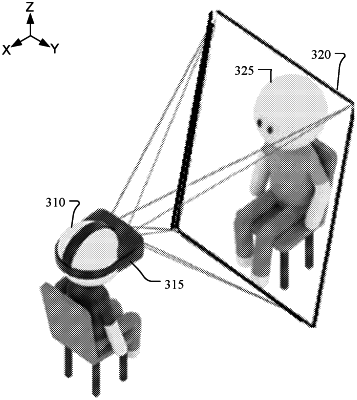| CPC G06T 15/205 (2013.01) [H04N 13/239 (2018.05)] | 20 Claims |

|
1. A method comprising, by a first computing system associated with an artificial-reality device:
receiving, through a network, video data of a user of a second computing system, the video data comprising a first captured image of the user and a second captured image of the user of the second computing system, wherein the first captured image and the second captured image are captured concurrently by a first camera and a second camera of the second computing system, respectively;
generating a two-dimensional planar proxy of the user of the second computing system for displaying the user of the second computing system, wherein the two-dimensional planar proxy of the user of the second computing system is generated without a three-dimensional model of the user of the second computing system;
determining a pose comprising a location and orientation of the two-dimensional planar proxy within a three-dimensional virtual environment, wherein the pose of the two-dimensional planar proxy is (1) a fixed pose in the three-dimensional virtual environment independent from a pose of the artificial-reality device in the three-dimensional virtual environment, or (2) a relative pose such that a spatial relationship between the artificial-reality device and the two-dimensional planar proxy remains fixed as the artificial-reality device moves in the three-dimensional virtual environment;
rendering one or more display images for one or more displays of the artificial-reality device based on the two-dimensional planar proxy having the determined pose and at least one of the first and second captured images;
displaying the rendered one or more display images using the one or more displays, respectively;
determining a viewing angle of the artificial-reality device relative to the two-dimensional planar proxy;
determining the viewing angle of the artificial-reality device relative to the two-dimensional planar proxy exceeds a predetermined maximum threshold; and
based on the determination that the viewing angle of the artificial-reality device relative to the two-dimensional planar proxy exceeds the predetermined maximum threshold, ceasing to display the one or more display images.
|